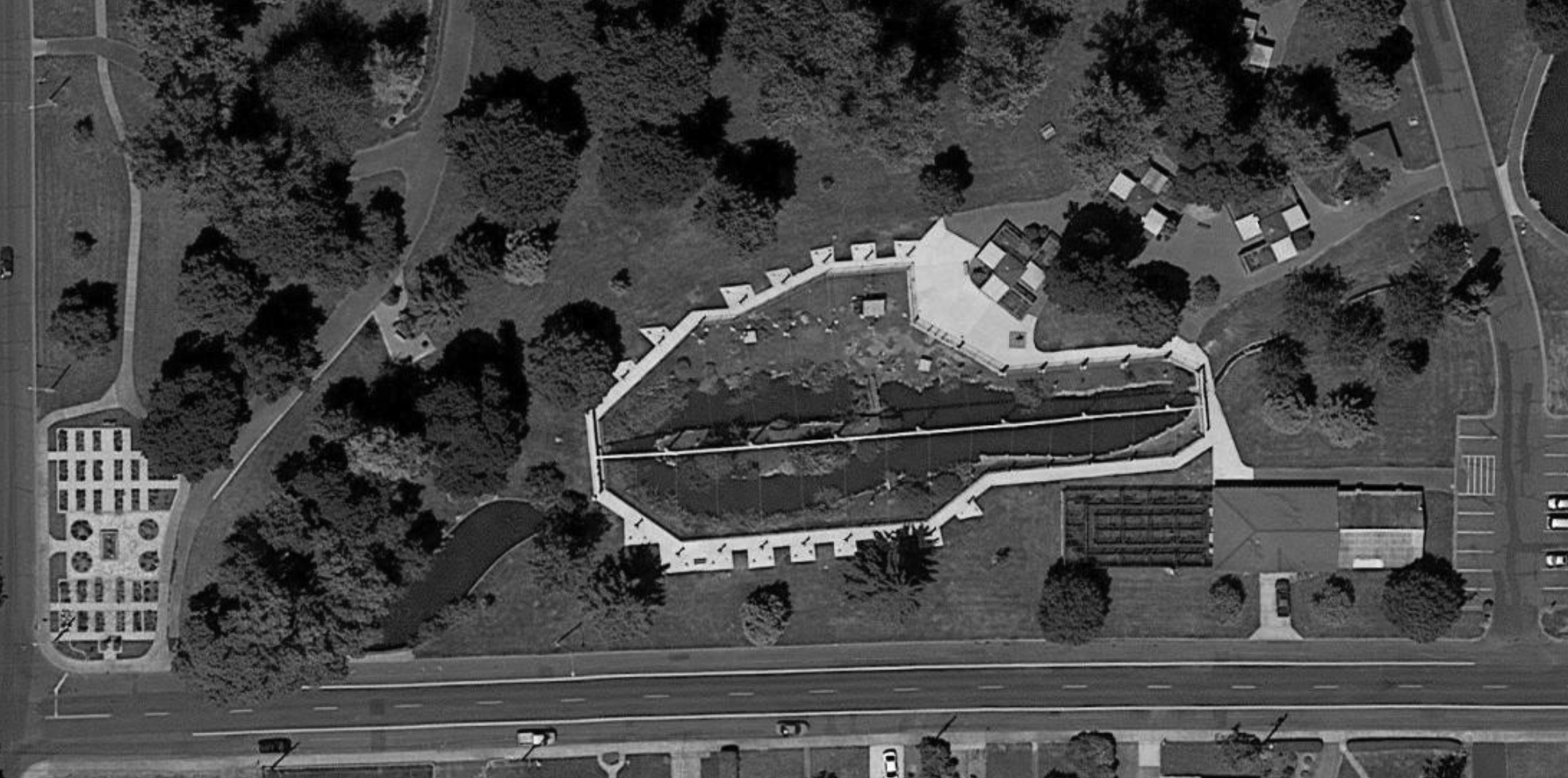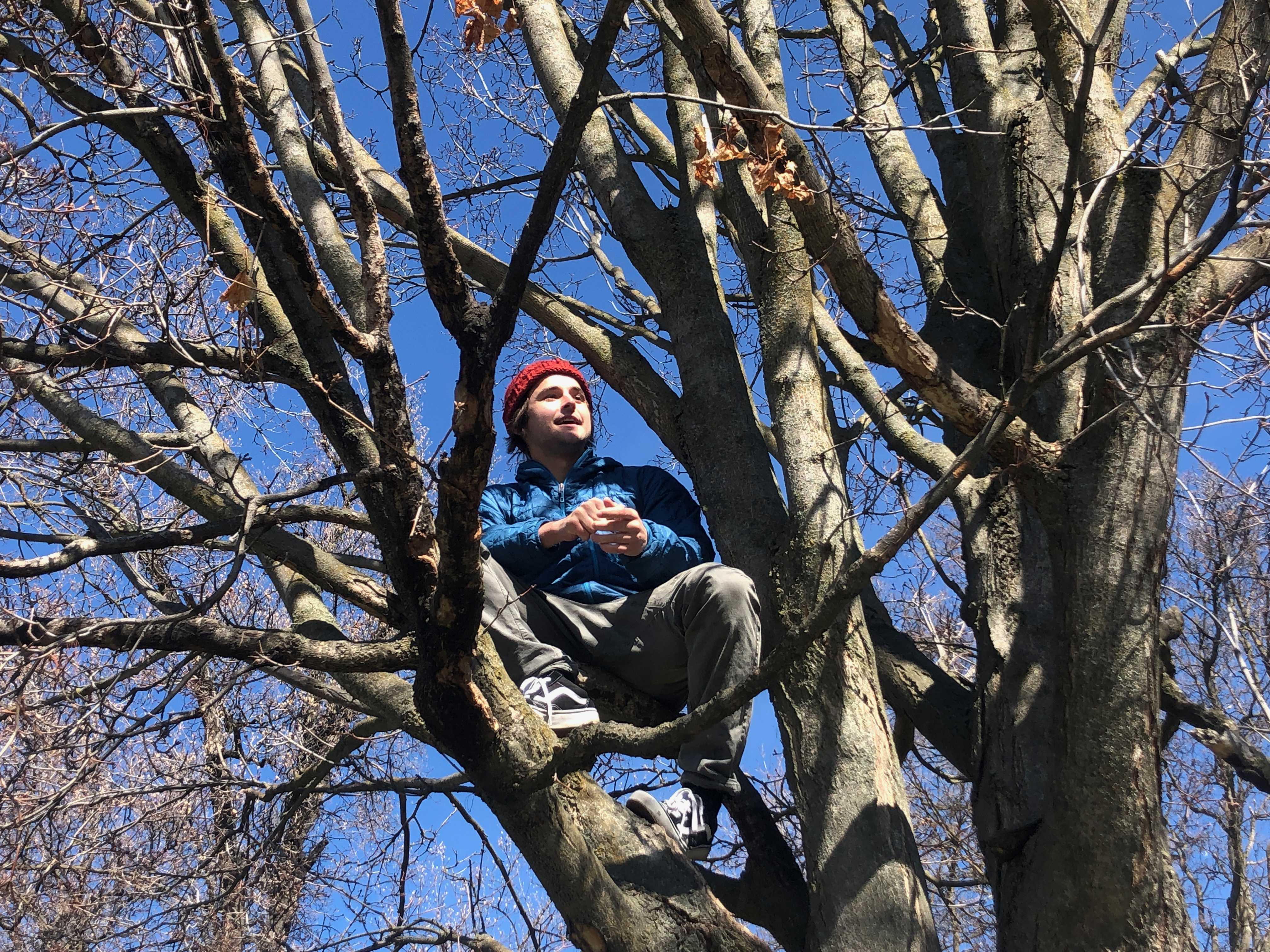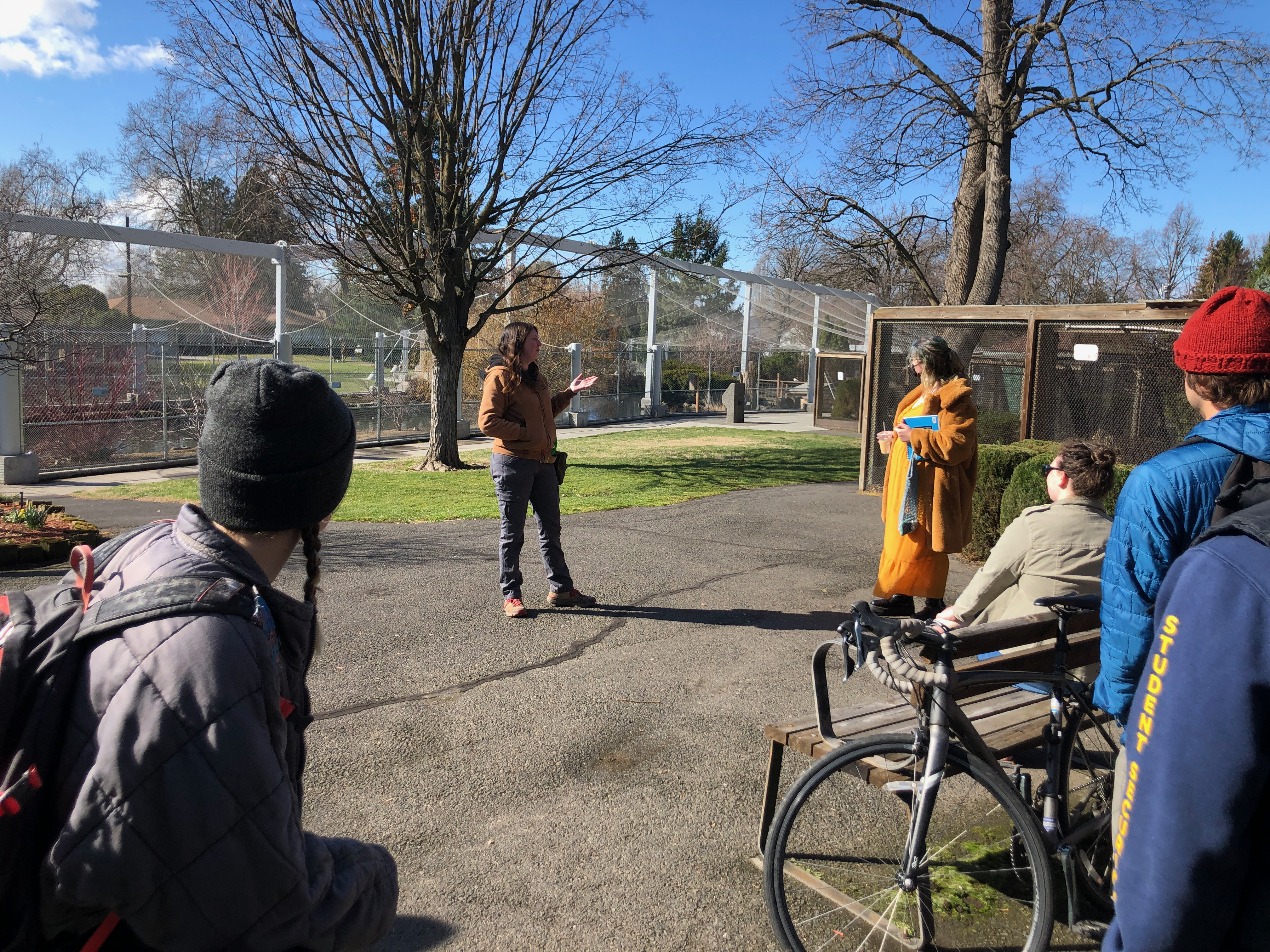Assignment: Research-Driven Scores for the Pioneer Park Aviary
Collaborative artwork invovling all students in Art and Public Engagement (Art 103)
Spring 2022, Whitman College



About the Project
Click here to read the zine produced as part of the project.
I asked students in my Spring 2022 Art and Public Engagement course to select a site within walking distance to Whitman College and create a series of written scores in response to that particular site, which would lead to a public event. Students unanimously chose the Walla Walla’s Pioneer Park Aviary.I wonder if this decision, perhaps subconsciously, was connected to a reading we had discussed the week prior titled How To Make An Interactive Work Of Art for Beginners by Mark Allen, faculty member at Pomona College and founder of the former LA-based institution Machine Project. His how-to guide ends with a playful suggestion of imagining a project for dolphins.
I first encountered the concept of DIY institutions through FutureFarmer’s BUILD-YOUR-OWN-HEADLANDS-RESIDENCY KIT. The Bay Area-based artist collective had been invited to a residency at Headlands Center for the Arts. Their goal was to create a framework that any artist, regardless of whether or not they were accepted to a prestigious residency, could create a similar opportunity for themselves simply by claiming and framing an experience using the same seriousness and rigor with which they would pursue a professional opportunity.
I asked students in my Spring 2022 Art and Public Engagement course to select a site within walking distance to Whitman College and create a series of written scores in response to that particular site, which would lead to a public event. Students unanimously chose the Walla Walla’s Pioneer Park Aviary.I wonder if this decision, perhaps subconsciously, was connected to a reading we had discussed the week prior titled How To Make An Interactive Work Of Art for Beginners by Mark Allen, faculty member at Pomona College and founder of the former LA-based institution Machine Project. His how-to guide ends with a playful suggestion of imagining a project for dolphins.
I first encountered the concept of DIY institutions through FutureFarmer’s BUILD-YOUR-OWN-HEADLANDS-RESIDENCY KIT. The Bay Area-based artist collective had been invited to a residency at Headlands Center for the Arts. Their goal was to create a framework that any artist, regardless of whether or not they were accepted to a prestigious residency, could create a similar opportunity for themselves simply by claiming and framing an experience using the same seriousness and rigor with which they would pursue a professional opportunity.
This DIY residency model was pushed further by artist Lenka Clayton, who designed the Artist Residency in Motherhood (A.R.I.M), a structured, fully-funded artist residency that took place inside her own home and life as a mother of two young children. She expanded the project to include parents of young children all over the world, claiming conceptual space for artists who had limited residency opportunities to create opportunities for themselves.
In addition to the DIY residency structure of this assignment, the residency includes the structure of scores, which came to popularity during the Fluxus art movement. As part of our research in the course, students read and wrote scores in response to the Fluxus Performance Workbook, which includes absurd and imaginative scores written by dozens of Fluxes artists in the 1960’s. Situated within the realm of Conceptual Art, these projects exist imaginary thought experiments for readers to ponder as they visit the aviary.
In addition to the DIY residency structure of this assignment, the residency includes the structure of scores, which came to popularity during the Fluxus art movement. As part of our research in the course, students read and wrote scores in response to the Fluxus Performance Workbook, which includes absurd and imaginative scores written by dozens of Fluxes artists in the 1960’s. Situated within the realm of Conceptual Art, these projects exist imaginary thought experiments for readers to ponder as they visit the aviary.


